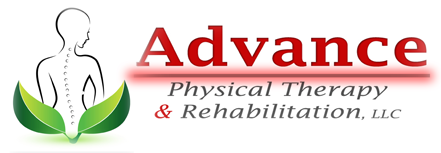30 Mar Bell’s Palsy: How Physical Therapy Can Help
Bell’s palsy is usually a temporary condition, but this disfiguring type of facial paralysis can ruin your self-esteem and damage your personal and professional relationships. Many patients don’t know that it’s often possible to reverse the symptoms of Bell’s palsy with the help of physical therapy, so it’s important to gain insight into the nature of this condition and how physical therapy can help you recover from Bell’s palsy without drugs.
What Is Bell’s Palsy?
The causes of Bell’s palsy are unknown, but this condition is characterized by a sudden loss of control over the muscles on one side of your face. Bell’s palsy is the most common cause of unilateral peripheral facial weakness, which is a medical term for the characteristic facial sagging caused by this condition.
Both sexes are equally affected by Bell’s palsy, and this condition is just as likely to affect the right side of the face as the left. Incidences of Bell’s palsy increase with age; individuals over 70 are most likely to experience this condition.
While Bell’s palsy is usually painless, it can cause pain in the vicinity of the ear, and it can also cause a feeling of numbness or tingling on one side of the face. Less than 10 percent of Bell’s palsy patients experience a recurrence of this condition, but even if Bell’s palsy only affects you once, you’ll remember the experience of struggling to chew, smile, and keep your mouth closed for the rest of your life.
How Is Bell’s Palsy Diagnosed?
Symptoms similar to Bell’s palsy can be caused by other conditions, such as Ramsay Hunt Syndrome, Lyme disease, HIV, and diabetes mellitus, so careful diagnosis of this condition is essential. The main diagnostic criteria that medical professionals will use in the diagnosis of Bell’s palsy is whether the facial weakness is central or peripheral. The peripheral facial weakness caused by Bell’s palsy affects the entirety of one side of the face while central facial weakness generally only affects the lower facial muscles on one side.
Medical professionals will also diagnose Bell’s palsy based on the timeline of symptom onset. Unlike similar conditions, which take days or weeks to onset, the symptoms of Bell’s palsy generally onset within a matter of hours.
Techniques for Planning Physical Therapy Treatments for Bell’s Palsy
Physical therapists will use a variety of techniques to determine the best ways to treat Bell’s palsy. After reviewing your medical history, your physical therapist will ask you about any existing health conditions or previous surgeries.
Next, your physical therapist will ask you about the symptoms you’re experiencing and whether any factors make your symptoms better or worse. He or she will then conduct a physical examination that’s designed to identify the pattern of weakness associated with Bell’s palsy.
For instance, your physical therapist will examine the movement of your eyebrow, your level of eye closure, your ability to use your cheeks to smile, your ability to pucker your lips, your ability to suck your cheeks between your teeth, and your ability to raise your upper and lower lips. Next, your therapist will provide education about your condition.
He or she will describe milestones you should watch for on the path of recovery, relay techniques for protecting the paralyzed part of your face, and evaluate the progress of your recovery so far. Protecting your eye is very important when you have cerebral palsy, so your physical therapist may recommend an eyepatch, teach you how to refresh your eyes with eye drops, or teach you how to carefully close your eye with your fingers.
Once these initial bases are covered, your physical therapist will serve as your mentor throughout the recovery process. He or she will teach you a variety of exercises and techniques that may help you recover from your condition more quickly.
Exercises That Can Help With Bell’s Palsy
Here are some examples of the types of exercises and techniques that your physical therapist may teach you to aid in the recovery process.
1. Initiation Exercises
During the early stages of Bell’s palsy, you will have trouble eliciting any type of movement in the paralyzed part of your face. At this point, your physical therapist will focus on initiation exercises that are designed to help you initiate movement in your paralyzed facial muscles.
For instance, your therapist will instruct you in assisted range of motion exercises, which help you arrange your face into positions where it is easier to move. Initiation exercises may also help you trigger your facial muscles into movement.
2. Facilitation Exercises
Once you’re able to elicit small amounts of motion in the paralyzed part of your face, your physical therapist will teach you facilitation exercises that will help you strengthen your weakened muscles. Facilitation exercises also help you increase the activity of your affected muscles, and they make it easier to keep your muscles active for longer periods of time.
3. Movement Control Exercises
As you recover from Bell’s palsy, you may encounter residual symptoms like synkinesis, cross-wiring, tight muscles, and muscle spasms. Whether or not you experience these symptoms, your physical therapist will teach you movement control exercises that will improve facial muscle coordination. These exercises will also help you make the facial expressions that you intend to make, and they will refine the facial movements that result in actions like opening your eye or speaking.
4. Relaxation Techniques
Throughout the Bell’s palsy recovery process, symptoms like facial twitches and spasms are common. While other techniques may also help with these symptoms, relaxation techniques are highly effective at reducing these unwanted facial movements. These techniques usually involve learning how to recognize when your facial muscles are activating and how to stop this process when needed.




Sorry, the comment form is closed at this time.